Do you have a question about the Olympus OM System OM-1 and is the answer not in the manual?
Lists camera and included accessories, advising to check for missing items.
Provides step-by-step instructions for attaching the camera strap.
Explains how to attach cable protectors to prevent disconnection and damage.
Details the procedure for inserting and removing the camera's battery.
Explains how to charge the battery using the supplied USB-AC adapter or a USB device.
Covers the process of inserting and removing memory cards.
Discusses dual memory card usage, usable card types, and write-protect switches.
Provides instructions for mounting and dismounting interchangeable lenses.
Explains how to adjust the monitor's angle for ease of viewing.
Describes how to power on the camera and explains battery level indication.
Explains the camera's automatic power-saving sleep mode.
Guides users through the initial setup process, including language and clock settings.
Details the information shown on the monitor during still photography and movie mode.
Explains how to switch between viewfinder and monitor displays using the eye sensor.
Describes how to cycle through different information display screens using the INFO button.
Covers selecting shooting modes and framing the shot.
Lists and briefly explains shooting modes like P, A, S, M, B, and Custom.
Explains how to use touch controls for focusing and taking photographs.
Describes how to review pictures immediately after shooting and adjust display duration.
Details how to use various shooting modes like Program AE, Aperture-Priority AE, Shutter-Priority AE, Manual Exposure.
Explains how to record movies in movie mode and basic settings.
Details exposure modes (P, A, S, M) available for movie recording.
Explains how to record movies using the REC button in photo shooting modes.
Describes how to prevent operating sounds using touch controls for shooting.
Introduces the menu system for customization and setup options.
Explains how to navigate menus using dials and buttons.
Describes how to view descriptions of menu items by pressing the INFO button.
Explains why menu items may appear gray and how to see the reason.
Explains accessing settings via direct buttons and the Super Control Panel.
Covers focus modes like S-AF, C-AF, MF, and their operations.
Covers Lens Focus Range, C-AF Lens Scanning, and Fine-Tuning Autofocus.
Explains exposure compensation, EV steps, fine-tuning, and flicker reduction.
Covers setting ISO sensitivity, auto ISO options, and restrictions.
Covers flash units, attachment, modes, wireless control, sync speed, and flash/exposure compensation.
Details drive modes like single frame, sequential, self-timer, pro capture, and anti-shock.
Explains how to reduce camera shake and use image stabilization features.
Covers image quality settings, aspect ratio, peripheral illumination, and picture modes.
Describes modes like High Res Shot, Live ND, Focus Stacking, HDR, Multiple Exposure, Digital Zoom, Interval Shooting, Keystone Correction, Fisheye Distortion.
Explains basic and overall display of image information.
Describes how to cycle through different information displays using the INFO button.
Covers viewing still images and movies, including playback controls.
Explains how to play back long movies recorded in multiple files.
Details methods for quickly finding pictures via index and calendar playback.
Explains how to zoom into pictures during playback and scroll.
Describes using touch controls for full-frame playback, magnification, movie playback, and index/calendar playback.
Covers rotating pictures, protecting images, copying, deleting, and disabling confirmation.
Explains how to save digital print orders to the memory card.
Allows resetting various settings for all pictures on a card at once.
Describes recording and adding audio to pictures.
Explains how to play back audio recorded with pictures and adjust volume.
Covers retouching RAW and JPEG pictures with various editing options.
Explains how to overlay multiple RAW photos to create a new picture.
Details how to cut selected footage from movies.
Describes how to save a still copy of a selected frame from a movie.
Allows reassigning the function of the R button during playback.
Allows reassigning the functions of the front and rear dials during playback.
Sets the starting zoom ratio for playback zoom.
Controls automatic rotation of portrait-orientation pictures during playback.
Selects which information is displayed during playback.
Configures information display when magnifying pictures.
Changes the number of frames shown in index display and enables calendar display.
Explains how to change button roles, assign functions, and customize controls.
Details assigning different roles to camera buttons.
Configures functions for the front and rear dials in different shooting modes.
Sets the rotation direction for dials to set exposure or other parameters.
Configures operations for the multi selector, including its center button and tilt functions.
Explains how to configure the Fn lever for different functions and modes.
Allows assigning multiple roles to a single button for quick access.
Sets brightness levels for overexposed or underexposed warnings in the histogram.
Covers cursor position, menu start position, and shortcuts for B mode.
Defines where the menu cursor appears and how it behaves.
Controls page navigation behavior when using the rear dial in menus.
Sets the default highlighted option for confirmation dialogs.
Allows creation of a personalized menu tab with selected items.
Explains how to reorder, move, or remove items and pages from "My Menu".
Covers card formatting, recording destinations, and file naming.
Details the process of formatting memory cards before first use.
Selects which card slot records still images and movies.
Allows specifying a folder for saving images on the memory card.
Chooses how files are named, including prefix and number assignment.
Covers saving lens information, output resolution, and copyright information.
Registers lens information like focal length and aperture for stabilization features.
Sets the output resolution information (dpi) stored with photo files.
Stores copyright information as Exif tags with saved photos.
Adjusts monitor brightness/hue, disables touch controls, and configures eye sensor and external monitor settings.
Enables or disables touch screen controls on the monitor.
Adjusts monitor color temperature and brightness.
Adjusts viewfinder brightness and hue.
Specifies camera operation when the eye is near the viewfinder.
Turns the autofocus confirmation beep on or off.
Sets signal output for HDMI connection, including output size and frame rate.
Selects how the camera functions when connected via USB (Storage, MTP, RAW/Control).
Manages battery status display, priority, sleep mode, and auto power off settings.
Adjusts monitor backlight dimming time to save battery.
Configures the delay before the camera enters sleep mode.
Sets the delay before the camera automatically turns off after sleep mode.
Shortens backlight and sleep mode delays for faster power saving.
Includes resetting settings, setting the camera clock, choosing language, and viewing firmware/certificates.
Resets camera settings to factory defaults.
Guides setting the date, time, time zone, and daylight saving time.
Selects the language for menus and tool tips.
Corrects deviation in the level gauge by setting a reference point.
Checks image sensor and processing functions using pixel mapping.
Displays firmware versions for camera and connected peripherals.
Warns about disabling wireless features in specific locations and potential security risks.
Explains how to disable Wi-Fi and Bluetooth communication.
Introduces connecting to a smartphone via Wi-Fi/Bluetooth and using the OM Image Share app.
Details the process of pairing the camera with a smartphone using Wi-Fi or Bluetooth.
Configures standby status for wireless connection when the camera is powered on.
Allows maintaining wireless connection to a smartphone after the camera is turned off.
Explains selecting and loading images to a smartphone.
Describes automatic image upload setup with OM Image Share and power-off standby.
Explains remote shooting using a smartphone with live view.
Details remote shooting using a smartphone's shutter function.
Describes adding GPS position data to images using a smartphone.
Restores smartphone connection settings to their default values.
Allows changing Wi-Fi and Bluetooth passwords.
Covers connecting the camera to a computer via Wi-Fi, including software installation.
Steps to manually register the camera in Windows settings.
Guides the process of pairing the camera and computer via USB.
Covers Wi-Fi connection methods like WPS, network list, and manual connection.
Explains how to upload pictures to a computer as they are taken using OM Capture.
Describes faster RAW processing when connected to a computer.
Explains copying pictures to a computer via USB as external storage.
Describes powering the camera using USB Power Delivery compliant devices.
Covers displaying pictures on TVs via HDMI and connecting for movie recording.
Explains viewing photos and movies on a TV using an HDMI cable.
Details the camera's IPX3 (water) and IP5X (dust) resistance specifications and precautions.
Lists general precautions related to dust and water resistance, including handling and maintenance.
Provides instructions for cleaning the camera and removing foreign materials.
Covers battery usage, charging, and disposal, including warnings.
Advises on using the USB-AC adapter with different electrical sources globally.
Discusses choosing lenses, system compatibility, and handling precautions.
Lists compatible lens types and their attachment, AF, and metering capabilities.
Explains the function of MF clutch mechanisms on certain lenses.
Describes camera display indicators for saving and recalling lens focus positions.
Lists and describes optional accessories like chargers and battery holders.
Details how to charge batteries using the BCX-1 charger and its indicators.
Explains the use of the optional power battery holder for extended shooting.
Provides important notes and warnings for product usage and safety.
Lists compatible external flash units and their features.
Explains how to set up and use wireless remote flash control.
Discusses using third-party flash units and potential compatibility issues.
Lists principal accessories like converter lenses and eyecups.
Provides instructions for cleaning and storing the camera, lenses, and accessories.
Details exterior, monitor, and lens cleaning procedures.
Advises on proper storage conditions for prolonged periods.
Explains dust reduction and pixel mapping functions.
Guides through checking and adjusting image pickup device and processing functions.
Offers troubleshooting tips for common issues like battery, language, focus, and noise.
Lists monitor indications, possible causes, and corrective actions for errors.
Provides a table of default settings for shooting modes and functions.
Covers essential safety instructions for product usage, power, foreign objects, cleaning, heat, and attachments.
Advises on safe placement and mounting of the camera, warning against flammable gases.
Warns against pointing the camera at the sun or bright lights to prevent damage.
Lists dangerous situations involving children and camera handling.
Strongly recommends using only specified accessories to prevent fire or injury.
Contains notices regarding camera storage, SD card usage, and data backup.
States the company's limitations of liability and warranty terms.
Warns about copyright laws and unauthorized use of material.
Outlines copyright and liability information regarding the manual and software.
Lists registered trademarks and product names.
| Brand | Olympus |
|---|---|
| Model | OM System OM-1 |
| Category | Digital Camera |
| Language | English |
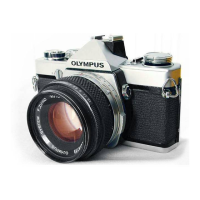

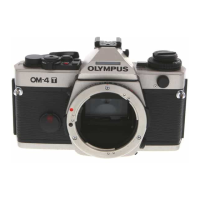



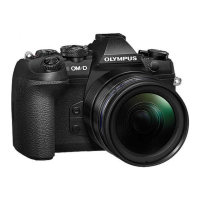
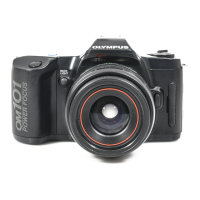
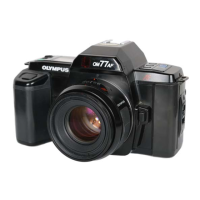

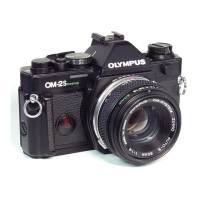
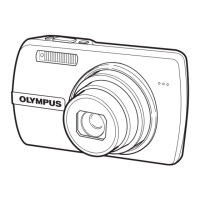
